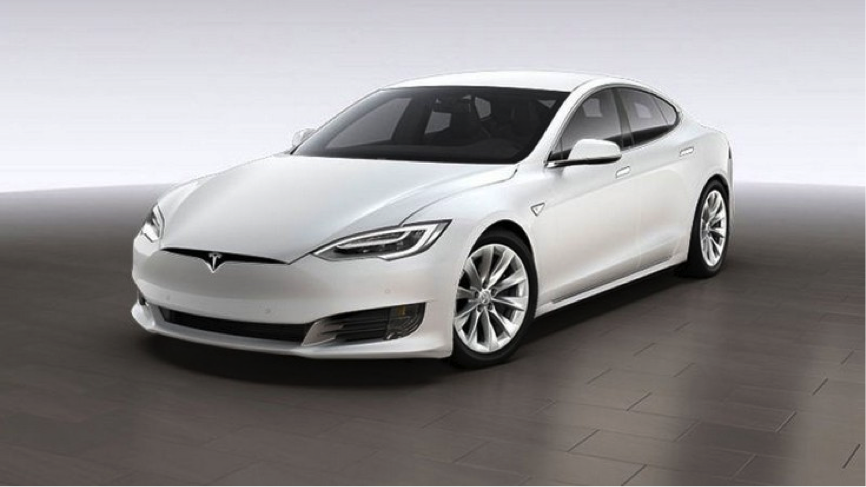by Irina Mironova (photo: Tesla Model S)
Last Sunday, September 11, I started the academic year by giving a lecture at the EUSP Orientation Weekend. I had to tell freshmen about electric cars and their future role in the energy system. One of the most important questions here is whether electric cars can ever cut the world’s thirst for oil enough to depress crude prices significantly.
Modern passenger cars use 18 million barrels a day of oil products, which is 18,7% of the 96 million barrels consumed daily, according to the IEA. The drop in oil prices post-2014 shows how vulnerable prices are to a relatively small shift in demand. The IEA explains that the drop in prices has been a result of oversupply in the global oil market. So potentially, if electric cars can enter the global car market in numbers that are large enough, this would mean permanent oversupply in the oil market and hence low oil prices (more on that in the Financial Times).
I got so excited about the topic, that I decided to run a little case study: what if I was one of those electric car owners who can change the patterns of oil demand? What if I drove an electric car in Saint Petersburg instead of my lovely Ford Fiesta?
Here’s what I have found out.
An electric car doesn’t have to be expensive, but the stuff that I like actually is.
My first idea of an electric car was Tesla. The Tesla Model S to be exact. And that car, of course, cannot exactly be called easily affordable at 4 mln roubles. A brief market survey has demonstrated that there are other electric cars available in Russia, including the Chinese Damer E-Car (sales temporarily halted currently, but it used to be available at half a million roubles, which is cheaper than my Ford Fiesta) and the Lada Ellada (that’s an electric Kalina produced in Russia and exciting, but expensive at over 1 mln roubles). I would nevertheless go for an analogue of a city car, something like a Mitsubishi i-MiEV or Nissan Leaf. Both of them are being used as test-cars in the process of developing the network of charging stations in Saint Petersburg. The prices for both cars exceed 1 mln roubles.
Electric cars (EV) drive for reasonable distances.
One battery charge gives between 150 and 200 km for the Mitsubishi and Nissan, and about 400 km for the Tesla Model S. This does not seem to be a lot. However, I compared it with my own mileage: over the past 4 years that I have had my current Ford Fiesta, and I drove 745 km a month on average. Charging the car several times a month does not seem like a huge problem in my case. The issue is the absence of infrastructure for express charging of the electric cars. Currently, there are records of two charging stations in the city. One of them at Galereya shopping center near the Moskovsky railway station, and the second one is at the Pulkovo airport. Handy locations if you have to do some shopping or pick up a friend at the airport, but a bit of hassle if you don’t actually need to go to any of those places.
Charging your EV at home is cheaper than buying gasoline for your Fiesta.
In fact, charging an electric vehicle at an express-charging station is not the only option. Electric cars can be charged from the regular electricity network. This only takes somewhat longer (several hours instead of 30 minutes). Plugging in your EV for the night is actually an effective solution if a charging station is not on your route. Under current electricity tariffs (3,91 RUB/kWh during the day and 2,30 RUB / kWh during night), it would cost me between 220 and 375 roubles a month to charge a 16 kWh battery (to drive my monthly 745 km). To drive that distance with a gasoline car, I am, by the way, spending 1966 roubles a month.
Based on fuel cost savings, would I rather have bought an electric car back in May 2012?
Actually, I don’t think so. Besides, fuel cost, I also had to spend money on technical maintenance and insurance, but still, the total amount of money spent on my Ford Fiesta has not climbed up to the price of the Mitsibishi i-MiEV, let alone the Tesla Model S (Figure 1).

And so, the verdict is: I have to do extra research about hybrid cars.
In the case of Saint Petersburg, the cost of electricity is competitive with the cost of gasoline for personal use in transportation. The main bottleneck is not the cost of fuel, but the cost of equipment (in this case, of the electric vehicle). Significant increases in the number of electric vehicles have been registered in countries with significant subsidies (e.g. Norway). “You can subsidize 10 000 cars, but not 10 million,” – says IEA’s Laszlo Varro. Therefore, electric cars subsidies are sort of out of discussion in present day Russia.
It’s also important to mention some general points. An electric engine does not automatically mean efficiency. You can still drive more than you need (and consume more electricity than you need). Energy will still be consumed, but in another form. An electric engine basically transfers transport from being part of oil supply chains to electricity supply chains (electricity does not come from nowhere!) The cut in emissions, as well as the fuel cost, are both a function of the gasoline sector and electricity sector organisation in any given country.
Oh and yes. It would take 50-100 million electric cars to displace 1 million barrels a day of oil, while today’s fleet is 1,2 million plug-in vehicles on the road, and today’s demand from passenger fleet is 18 million barrels a day. The electric car dream really seems to be a dream.

